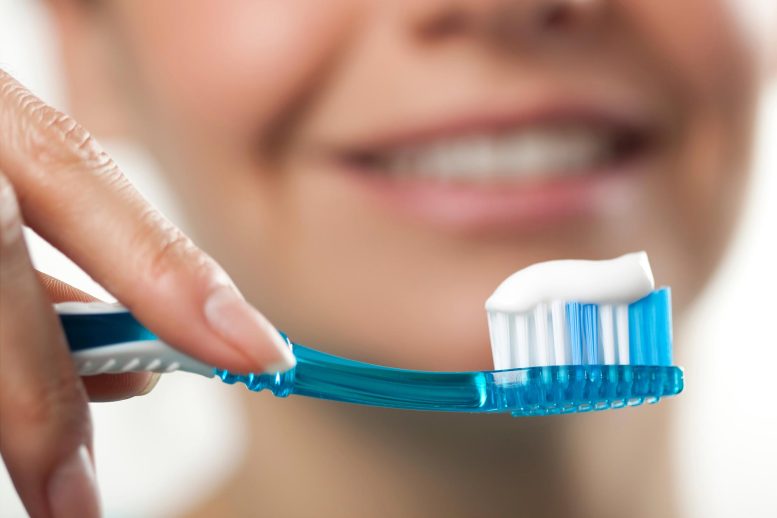
An 18-month-long clinical trial found that hydroxyapatite (a calcium phosphate mineral) toothpaste, a potential alternative to fluoride, is just as effective in preventing dental cavities. This discovery implies that hydroxyapatite toothpaste could be a safer and effective alternative, especially for children who may be at risk from excessive fluoride consumption.
Patients using a toothpaste that contains a mineral crucial to bone formation were not more likely to develop cavities than patients using a fluoride toothpaste.
Brushing twice a day is a staple piece of advice for good dental hygiene. However, could the toothpaste we use be further optimized to maintain clean teeth and prevent health issues arising from poor dental health?
Conventionally, toothpastes use fluoride, which is an effective agent for oral hygiene. However, fluoride can sometimes lead to health problems, particularly for children who consume excessive amounts by swallowing toothpaste. To circumvent this, children are typically advised to use only a small quantity of toothpaste, but this may compromise toothbrushing effectiveness. In pursuit of alternatives, an international team of scientists and Polish clinicians have identified a hydroxyapatite toothpaste that appears to be as efficacious as fluoride toothpaste in preventing cavities.
“Hydroxyapatite is a safe and effective alternative to fluoride in caries prevention for daily use,” said Professor Elzbieta Paszynska of the Poznan University of Medical Sciences, co-principal investigator and corresponding author of the study published on July 18 in the journal Frontiers in Public Health.
Minimally invasive dentistry
Hydroxyapatite, a calcium phosphate mineral found in our skeleton, is proven to be safe for human consumption and has previously demonstrated efficacy in treating oral conditions like periodontitis. It performs a dual function: inhibiting the demineralization of teeth, a precursor to cavities, and promoting remineralization to strengthen damaged tooth surfaces.
“Currently, in dental care, the aim is to use ‘minimally invasive dentistry’ as often as possible,” explained Paszynska. “This means trying to preserve as much tooth tissue as possible, including those altered by initial caries that still show the ability to remineralize. The use of remineralization compounds is a boon, as it may limit the need for invasive treatment of carious lesions with a drill.”
To see if it would help patients without specific dental conditions, the clinicians recruited 189 adults aged 18-45 to take part in an 18-month-long double-blind randomized clinical trial. They aimed to see all patients through to the end of the study without an increase in cavities.
171 patients completed the trial, evenly split between the hydroxyapatite toothpaste group and the control group with fluoridated toothpaste. All patients had at least 10 teeth without cavities, were willing to use an electric toothbrush, and had no pre-existing tooth problems in need of treatment. Patients were provided with electric toothbrushes and replacement heads for these brushes, as well as neutrally packaged toothpaste that could have contained either the hydroxyapatite toothpaste or a fluoride toothpaste. Neither patients nor examiners knew which toothpaste a given patient was using, and patients used no other oral care products. They were also asked to brush their teeth at the same time every day – twice a day, after meals, for three minutes each time – but they were not asked to change their diets.
“We did not monitor the diet of each subject as the aim was to test two different kinds of toothpaste, not the influence of the diet on the caries progress,” said Paszynska.
Hydroxyapatite equally effective
Throughout the trial, patients visited the clinicians every six months for an examination and to receive a fresh supply of toothpaste. Their teeth were visually examined and checked for any shadows that might reveal an early-stage cavity using a DIAGNOcam device. A plaque-disclosing solution was also used to see how clean their teeth were. Each stage of the trial was monitored for consistency between patients, and patient safety was monitored at every appointment to make sure there weren’t any unanticipated side effects.
At the end of the trial, the scientists found that nearly 90% of patients in both groups had no new cavities. There was no statistical difference in efficacy between the patients using a hydroxyapatite toothpaste and the control group using a fluoride toothpaste: both worked equally well.
“Previously published clinical trials also show the caries-preventing effect of hydroxyapatite in risk groups such as children and patients undergoing orthodontic therapy,” said Paszynska. “With our new clinical trial, it has been shown that hydroxyapatite prevents dental caries in adults. This is important from a public health perspective.”
Reference: “Caries-preventing effect of a hydroxyapatite-toothpaste in adults: an 18-month double-blinded randomized clinical trial” by Elzbieta Paszynska, Malgorzata Pawinska, Joachim Enax, Frederic Meyer, Erik Schulze zur Wiesche, Theodor W. May, Bennett T. Amaechi, Hardy Limeback, Amadeusz Hernik, Justyna Otulakowska-Skrzynska, Anna Krahel, Inga Kaminska, Joanna Lapinska-Antonczuk, Ewa Stokowska and Maria Gawriolek, 18 July 2023, Frontiers in Public Health.
DOI: 10.3389/fpubh.2023.1199728
Funding: Dr. Kurt Wolff GmbH & Co. KG, Poznan University of Medical Sciences

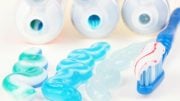
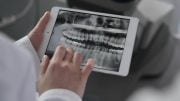
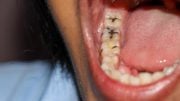


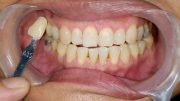

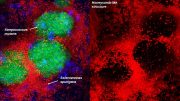
What a load of krap!